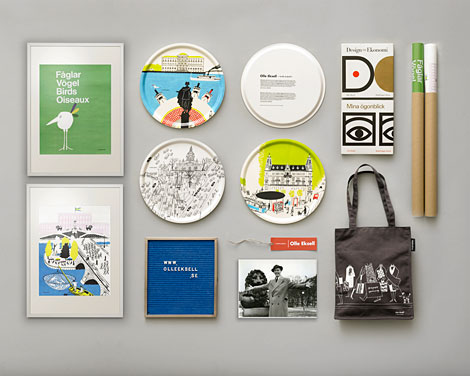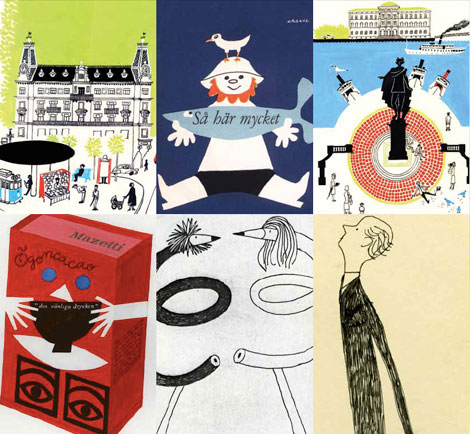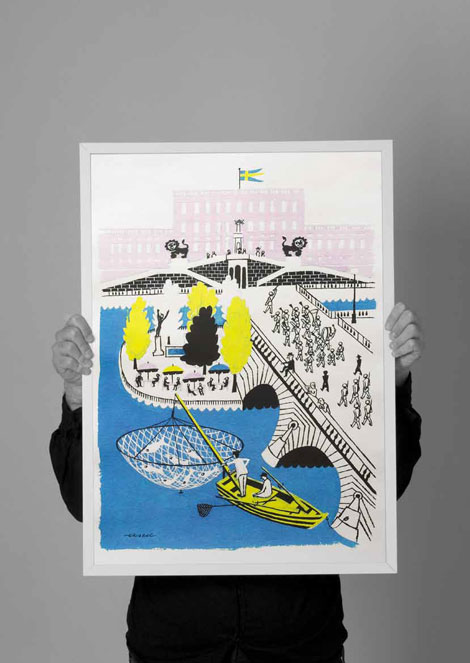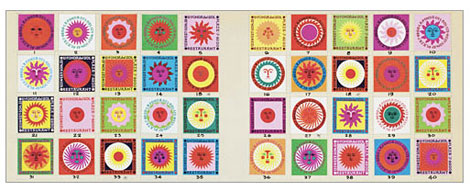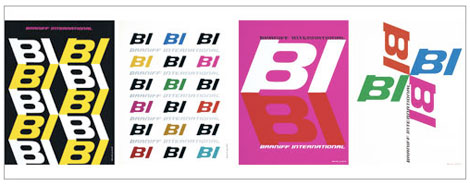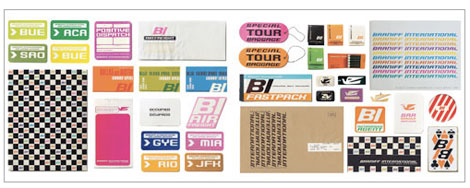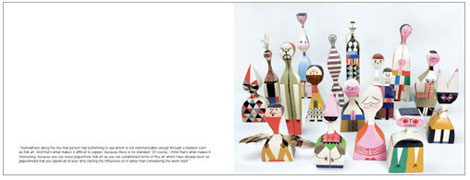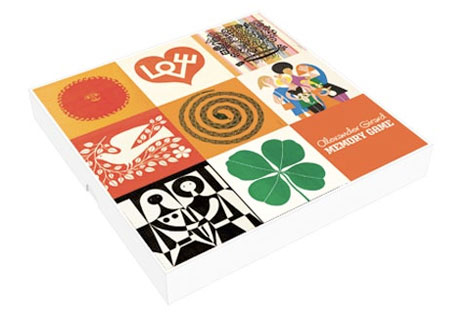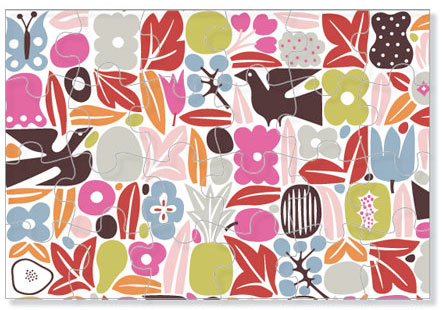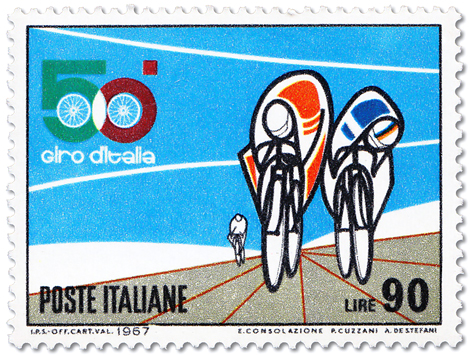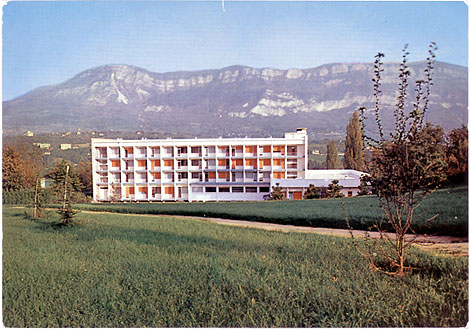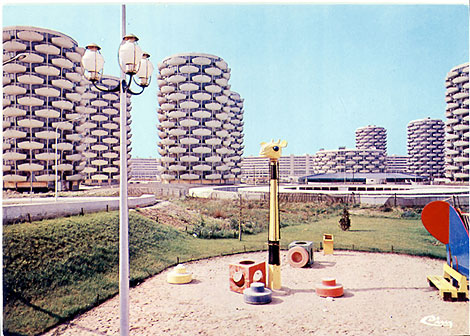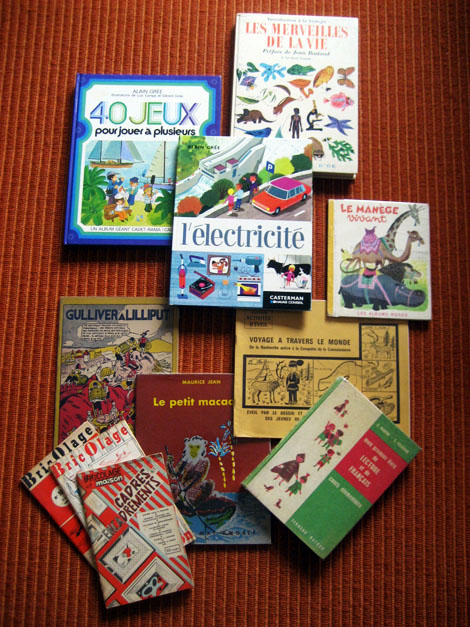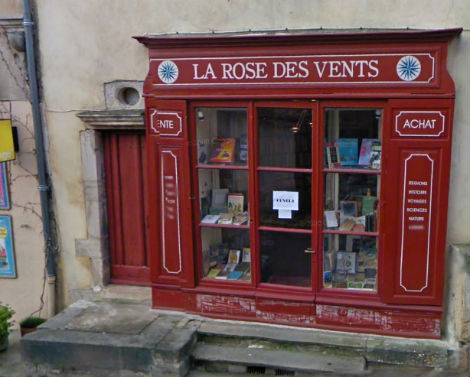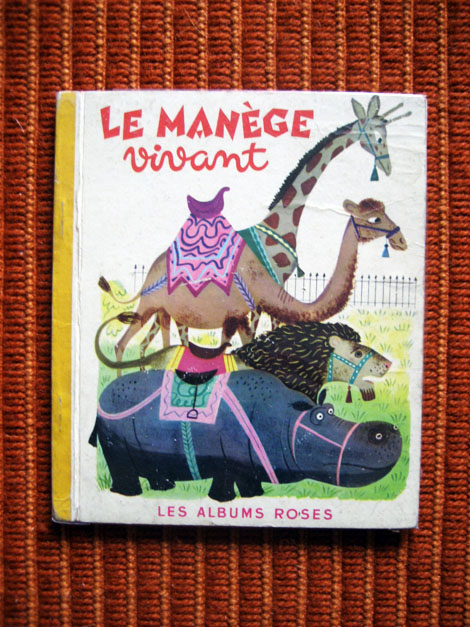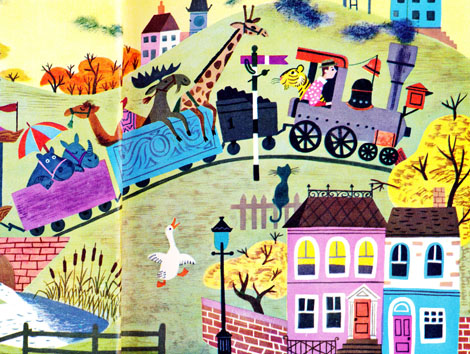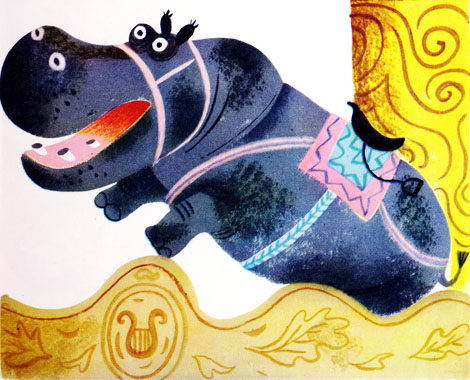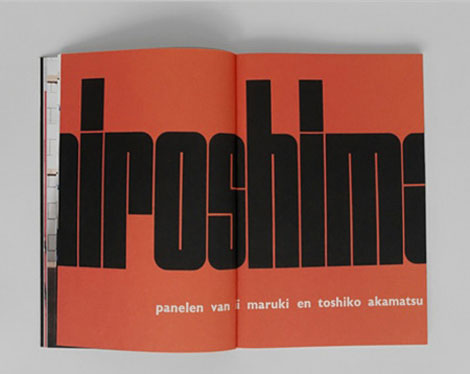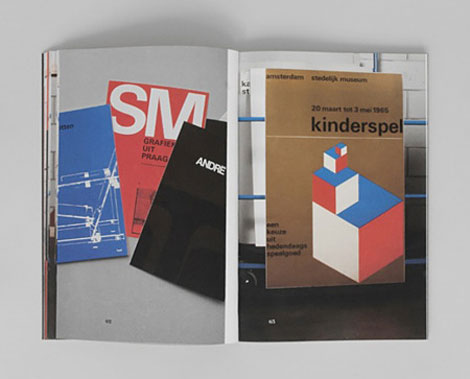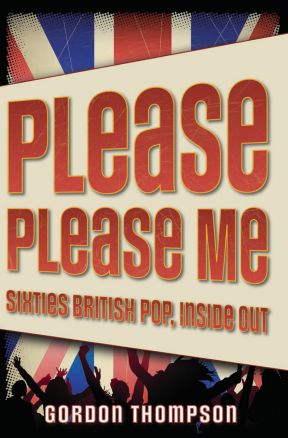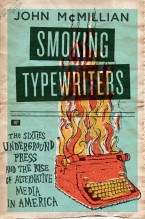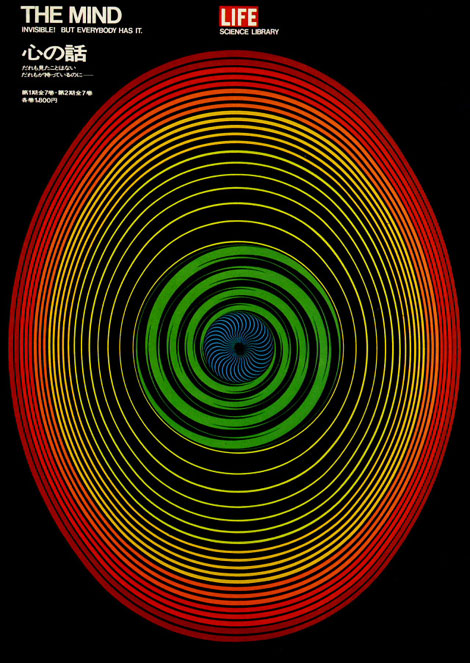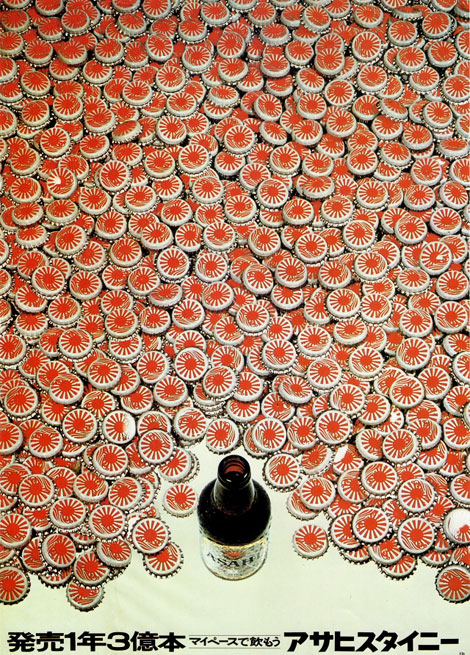I’m optimistic that, through literature that explores and celebrates diversity, all kids will be able to comfortably go on any adventure with any character to anywhere.
Add a CommentViewing: Blog Posts Tagged with: 1960s, Most Recent at Top [Help]
Results 1 - 25 of 140
Blog: The Children's Book Review (Login to Add to MyJacketFlap)
JacketFlap tags: Multicultural, Ages 9-12, Diversity, Japan, Chapter Books, African American, featured, 1960s, Books for Girls, Middle Grade Books, Quest for Literacy, Dial books, cultural diversity, Cultural Wisdom, Best Kids Stories, Astronaut Books, Marilyn Hilton, Add a tag
Blog: The Children's Book Review (Login to Add to MyJacketFlap)
JacketFlap tags: Ages 4-8, Picture Books, Author Interviews, Current Affairs, Civil Rights, African American, featured, 1960s, Books for Girls, Jonah Winter, Women's History, African American History Month, Cultural Wisdom, Speed Interview, Books on Voting Rights, Shaun W. Evans, Add a tag
Which five words best describe Lillian’s Right to Vote: A Celebration of the Voting Rights Act of 1965? America’s racist history surrounds us.
Add a CommentBlog: OUPblog (Login to Add to MyJacketFlap)
JacketFlap tags: Books, History, Sociology, Education, Architecture, 1960s, university, British, campus, concrete, *Featured, higher education, Art & Architecture, Arts & Humanities, Add a tag
Every campus has one, and sometimes more than more: the often unlovely and usually unloved concrete building put up at some point in the 1960s. Generally neglected and occasionally even unfinished, with steel reinforcing rods still poking out of it, the sixties building might be a hall of residence or a laboratory, a library or lecture room. It rarely features in prospectuses and is never – never ever – used to house the vice chancellor’s office.
The post How I stopped worrying and learned to love concrete appeared first on OUPblog.
Blog: Writer's Digest Questions and Quandaries (Login to Add to MyJacketFlap)
JacketFlap tags: General, travel, biography, Memoir, nonfiction, research, 1960s, 60s, Guest Post, Sixties, Craft & Technique, There Are No Rules Blog by the Editors of Writer's Digest, ANDREW MARANISS, biography writing, Add a tag
 BY ANDREW MARANISS
BY ANDREW MARANISS
People assume that when your father is a Pulitzer Prize–winning, bestselling author, he must have helped you a lot with your first book.
For a while, I thought he might, too.
I’d email first drafts of my chapters for “Strong Inside” to my mom and dad, and I soon discovered why the messages I’d get back only contained suggestions from my mother: my father understood from the very beginning that I’d feel a whole lot better about my book if I knew I did it without major input from him.
Which isn’t to say that he had no influence. His fingerprints are all over it, but more in the sense of lifelong lessons on reporting and writing: avoid clichés and unnecessary words; find the universal in the particular; do the reporting.
Growing up, the people who came to visit our house for dinner or picnics were mostly journalists—I’d sit around on the periphery of the conversations and listen to the joy everyone took in describing great lead paragraphs, or scooping the competition. (I also remember the time Bob Woodward brought my sister and I some 45-RPM records, including “Safety Dance,” and the time Sarah and I tried to trick John Feinstein into eating a dog biscuit). Growing up in the home of a Washington Post journalist meant reading a great newspaper every morning—and reading great writing is the best way to learn to write. (Another childhood memory: Each morning, I’d spread the Post out on the dining room table, read the sports section first, and our family sheepdog, Maggie, would hop up on the table, park her body on top of the rest of the paper, and then lap up the milk from my cereal bowl when I was nearly done. Wow.)
 Feeling as through your creativity well is running a little dry? With The Write-Brain Workbook and Take 10 for Writers, you’ll get the words flowing again in no time! Over 1,000 combined exercises help you get into the habit of writing—and enjoy it! You’ll learn how to celebrate your own writing accomplishments; discover your own unique writing process; build momentum in your writing and overcome writer’s block. Regardless of genre, you’ll unleash your own writing passion with this Creative Writing Collection.
Feeling as through your creativity well is running a little dry? With The Write-Brain Workbook and Take 10 for Writers, you’ll get the words flowing again in no time! Over 1,000 combined exercises help you get into the habit of writing—and enjoy it! You’ll learn how to celebrate your own writing accomplishments; discover your own unique writing process; build momentum in your writing and overcome writer’s block. Regardless of genre, you’ll unleash your own writing passion with this Creative Writing Collection.
My father did not become a published author until after I graduated from college, but one of the lessons I’ve picked up from him in this later stage of his writing career is the concept of “go there.” For him, that meant traveling to Vietnam for one book, moving to Green Bay, Wisconsin, for the winter for another, and flying to Kenya, Indonesia, Hawaii and Kansas for his bio of Barack Obama.
In my case, going there meant two things: seeing my adopted hometown of Nashville through the eyes of my subject, Perry Wallace, and trying to travel back in time to the 1960s in as many ways as possible. On the time-travel side, I set my satellite radio to the 1960s channel and spent my 45-minute commutes to my “day job” listening to the songs Wallace and his contemporaries would have heard while he was making history as the first African American basketball player in the Southeastern Conference. I watched movies from the period, and read books about the Sixties that had nothing to do with Wallace’s story but shed light on the culture of the times in interesting ways (in addition to my dad’s many books that are set in the decade, one of my favorites was Mark Harris’ book, Pictures at a Revolution, on the five movies nominated for Oscars in 1967).
It was seeing Nashville through Perry Wallace’s eyes that produced the most valuable anecdotes for the book. I’ll forever remember the afternoon we spent driving around the town he left 44 years ago. He showed me the houses he grew up in, the parks he played in, the schools he attended. Driving past one house, he saw an old friend sitting on the front porch and jumped out of the car to say hello. Driving past a street corner in a now-fashionable part of town, he explained that in 1955, standing on that same corner, he had been stunned by a carload of white teenagers who pointed a gun out their window at him, pointing it, pointing it, pointing it, as the car slowly made its way around the corner. And as we drove past a baseball field, he asked me to stop the car. We got out, and he pointed to a thicket of rocks and trees behind the outfield fence. “See that rock?” he asked. “That’s where I sat and meditated over my decision whether to go to Vanderbilt.”
Suddenly I was standing next to Perry Wallace in the present, but also sitting next to him on that rock in 1966.
“Go there” indeed. Thank you, Dad.
 Andrew Maraniss is the author of the new biography, Strong Inside: Perry Wallace and the Collision of Race and Sports in the South. His father, David Maraniss, is a Pulitzer Prize–winning journalist for Washington Post and the author of 10 books.
Andrew Maraniss is the author of the new biography, Strong Inside: Perry Wallace and the Collision of Race and Sports in the South. His father, David Maraniss, is a Pulitzer Prize–winning journalist for Washington Post and the author of 10 books.
Follow Andrew Maraniss on Twitter @trublu24 and at his website, andrewmaraniss.com.
Add a CommentBlog: Shelf-employed (Login to Add to MyJacketFlap)
JacketFlap tags: poetry, memoir, nonfiction, writing, religion, New York, family life, Civil Rights, J, novels in verse, 1960s, Non-Fiction Monday, South Carolina, bio, African Americans, Add a tag
 Woodson, Jacqueline. 2014. Brown Girl Dreaming. New York: Penguin.
Woodson, Jacqueline. 2014. Brown Girl Dreaming. New York: Penguin.
Despite the title, Brown Girl Dreaming is most certainly not just a book for brown girls or girls. Jacqueline Woodson's memoir-in-verse relates her journey to discover her passion for writing. Her story is framed by her large, loving family within the confines of the turbulent Civil Rights Era.
Sometimes a book is so well-received, so popular, that it seems that enough has been said (and said well); anything else would just be noise. Rather than add another Brown Girl Dreaming review to the hundreds of glowing ones already in print and cyberspace, I offer you links to other sites, interviews and reviews related to Brown Girl Dreaming. And, I'll pose a question on memoirs in children's literature.
First, the links:
- Brown Girl Dreaming is a National Book Award Finalist in the Young People's Literature category.
- Jacqueline Woodson was interviewed on NPR regarding Brown Girl Dreaming.
- Read an excerpt from Brown Girl Dreaming here.
- Even the prestigious Christian Science Monitor carried a review of Brown Girl Dreaming - the review written by award-winning author, Augusta Scattergood.
- Elizabeth Bird's "Fuse 8" review of Brown Girl Dreaming - thoughtful and insightful, as always
- AudioFile Magazine's review of Brown Girl Dreaming and an excerpt - read by Jacqueline Woodson herself
- New York Times Sunday Book Review of Brown Girl Dreaming
As a librarian who often helps students in choosing books for school assignments, I have written many times about the dreaded biography assignment - excessive page requirements, narrow specifications, etc.
Obviously, a best choice for a children's book is one written by a noted children's author. Sadly, many (by no means all!) biographies are formula-driven, series-type books that are not nearly as engaging as ones written by the best authors. Rare is the author of young people's literature who writes an autobiography for children as Ms. Woodson has done. When such books exist, they are usually memoirs focusing only on the author's childhood years. This is perfectly appropriate because the reader can relate to that specified period of a person's lifetime. Jon Sciezska wrote one of my favorite memoirs for children, Knucklehead, and Gary Paulsen's, How Angel Peterson Got his Name also comes to mind as a stellar example. These books, however, don't often fit the formula required to answer common student assignment questions, i.e., birth, schooling, employment, marriages, accomplishments, children, death. Students are reluctant to choose a book that will leave them with a blank space(s) on an assignment.
I wonder what teachers, other librarians and parents think about this. Must the biography assignment be a traditional biography, or can a memoir (be it in verse, prose, or graphic format) be just as acceptable? I hate to see students turn away from a great book because it doesn't fit the mold. If we want students to be critical thinkers, it's time to think outside the box and make room for a more varied, more diverse selection of books.
Blog: The Children's Book Review (Login to Add to MyJacketFlap)
JacketFlap tags: Deborah Wiles, Freedom Summer, Desegregation, Cultural Wisdom, Documentary Fiction, Segregation, The Sixties Trilogy, Ages 9-12, American History, Chapter Books, Civil Rights, African American, 1960s, Scholastic, Add a tag
Revolution, Deborah Wiles’ second novel in The Sixties Trilogy, sends readers on a journey to Greenwood, Mississippi in the summer of 1964, also known as “Freedom Summer."
Add a CommentBlog: OUPblog (Login to Add to MyJacketFlap)
JacketFlap tags: Books, Music, History, Videos, youtube, songs, America, 1960s, civil rights movement, equality, ruth, Lena Horne, *Featured, entertainers, feels, Nina Simone, Black Women Entertainers, Feldstein, How It Feels to Be Free, Ruth Feldstein, tkad9rib5dw, wldwysztgco, diyvvwxtwj4, Add a tag
In the battle for equal rights, many Americans who supported the civil rights movement did not march or publicly protest. They instead engaged with the debates of the day through art and culture. Ruth Feldstein, author of How it Feels to Be Free: Black Women Entertainers and the Civil Rights Movement, joined us in our New York offices to discuss the ways in which culture became a battleground and to share the stories of the female performers who played important but sometimes subtle roles in the civil rights movement.
Ruth Feldstein on the ways artists used their art to advance the civil rights movement:
Click here to view the embedded video.
Ruth Feldstein on Lena Horne’s legacy:
Click here to view the embedded video.
Nina Simone as an activist:
Click here to view the embedded video.
Ruth Feldstein is Associate Professor of History at Rutgers University, Newark. She is the author of How it Feels to Be Free: Black Women Entertainers and the Civil Rights Movement and Motherhood in Black and White: Race and Sex in American Liberalism, 1930-1965.
Subscribe to the OUPblog via email or RSS.
Subscribe to only music articles on the OUPblog via email or RSS.
The post Female artists and politics in the civil rights movement appeared first on OUPblog.
Blog: OUPblog (Login to Add to MyJacketFlap)
JacketFlap tags: Music, Beatles, paul mccartney, 1960s, John Lennon, gordon thompson, please please me, lennon, mccartney, Inside Out, songwriters, *Featured, Arts & Leisure, george martin, Parlophone, Sixties British Pop, Ardmore and Beechwood, Brit Pop, Dick James, Helen Shapiro, Northern Songs, Sid Colman, songwriting recording artists, Southern Music, nems, Add a tag
By Gordon R. Thompson
Songwriting had gained the Beatles entry into EMI’s studios and songwriting would distinguish them from most other British performers in 1963. Sid Colman at publishers Ardmore and Beechwood had been the first to sense a latent talent, bringing them to the attention of George Martin at Parlophone. Martin in turn had recommended Dick James as a more ambitious exploiter of their potential catalogue and, to close the deal, James had secured a national audience for the Beatles. Nevertheless, as the band grew in popularity, James knew that McCartney and Lennon would attract the attention of other music publishers.
Most fans, unless they bought sheet music, were at best only vaguely aware that music publishers had any role at all in popular music, let alone that they controlled an economically critical part of the industry. Even Lennon and McCartney at first underestimated the importance of music publishing until probably the first royalty checks began arriving at manager Brian Epstein’s NEMS Enterprises offices. Every time someone purchased a recording of one of their songs—no matter by whom—both the songwriters and the publisher profited. And every play on the radio and every television appearance did the same.
The home of Britain’s music publishing industry resided in London’s Denmark Street, a one-block stretch of offices, studios, and stores near Soho, serviced by a small pub, a café, and a steady stream of aspiring songwriters. Dick James’s office sat at the corner of Denmark Street and Charing Cross Road, not far from the premises of Southern Music, Regent Sound Studios, and other music-centered establishments. Brian Epstein had walked into these offices in November with a copy of “Please Please Me” and the hope that James could break the Beatles into the national media. James delivered immediately, booking an appearance for the band on the 19 January 1963 edition of ABC’s television show, Thank Your Lucky Stars.
The traditional role of the music publishers was to plug songs, bringing them to the attention of artist-and-repertoire and/or personal managers in an effort to have them match compositions with performers; but rock and roll was changing that model. When EMI’s Columbia Records released Cliff Richard and the Drifters’ recording of Ian Samwell’s “Move It” in August of 1958, London saw the start of musicians performing their own music. The tradition only deepened with Johnny Kidd and the Pirates’ “Shakin’ All Over” in June 1960. American artists such as Chuck Berry, Buddy Holly, and Carl Perkins routinely wrote and recorded their own material, unlike singer Bobby Rydell or many other pop stars who performed material written by professional songwriters. In Britain, songwriting recording artists often proved fleeting phenomena.
With “Love Me Do” and “Please Please Me,” as well as a number of other originals that would appear on their first album Please Please Me, John Lennon and Paul McCartney demonstrated their ability to write and perform their own material with spectacular results. Nevertheless, they knew the model and their first efforts to write a song for another performer met with mixed results. Touring with Helen Shapiro, the two songwriters futilely attempted to convince her and her management to record their song “Misery.” Another performer on the show, Kenny Lynch happily picked up the tune and very soon other artists would be looking for songs by McCartney and Lennon. Dick James, perhaps worried that with greater success the two ambitious Liverpudlians (and their manager) might bolt for yet another publisher, sought a strategy that would keep them as clients.
Click here to view the embedded video.
McCartney and Lennon were not the only songwriting performers in London. Southern Music had contracted eager songwriters and willing performers John Carter and Ken Lewis (later the core of the singing group the Ivy League) to write for the publisher. Their mentor at Southern, Terry Kennedy had even dubbed their band the “Southerners” (with a young Jimmy Page on guitar). However, they tended to write tunes for other singers and to perform songs written by other songwriters, all under the umbrella of their publisher.
Dick James’s big idea was to have John Lennon and Paul McCartney become part owners of their own publishing venture: Northern Songs. The arrangement that Epstein, McCartney, and Lennon made with James must have seemed good at the time, especially given that most young composers had no income from their work other than their author royalties. Northern Songs rewarded the two Liverpudlians with a larger piece of the pie, dividing the ownership of company between (i) Dick James Music, (ii) NEMs, (iii) Lennon, and (iv) McCartney. Dick James Music held a 51% voting share, leaving Lennon and McCartney each 20%, and NEMS Enterprises picking up the remaining 9%; however, James also took a 10% administrative fee off the top, so that in practice, the songwriters and their manager shared about 44% of the income.
Lennon and McCartney already had an agreement with Epstein to write songs, but a company dedicated to their music brought the game to an entirely new level. This would not be the last time that they would be the first to explore new territory in the business, from which other rock and pop artists and their managements would learn.
Gordon Thompson is Professor of Music at Skidmore College. His book, Please Please Me: Sixties British Pop, Inside Out, offers an insider’s view of the British pop-music recording industry. Check out Gordon Thompson’s posts on The Beatles and other music here.
Subscribe to the OUPblog via email or RSS.
Subscribe to only music articles on the OUPblog via email or RSS.
The post The Beatles and Northern Songs, 22 February 1963 appeared first on OUPblog.
Blog: inspiration from vintage kids books and timeless modern graphic design (Login to Add to MyJacketFlap)
JacketFlap tags: 1950s, 1960s, italy, Found design, motorcycles, Add a tag
50cc Astor Super Sport 1969 /Itom (1948–73), Turin, Italy / Courtesy of Stewart Ingram
During the Second World War many of Italy’s motorcycle and automobile manufacturing facilities were destroyed by allied bombing. To aid in the post-war economic recovery of these industries, the Italian government revised a highway code which reduced the minimum driving age to fourteen. With this, motorcycle manufacturers could create a new class of vehicles aimed at the younger generation. What these bikes lacked in power, they easily made up in style.
In 2012, SFO curated a small collection of these motorcycles for an installation in their international terminal. Included in the display were pieces by Itom, Benelli and MV August - all of which are scarcely seen on the roadways of Europe let alone the U.S. Although these vehicles have long ceased production, their legacy lives on through their iconic design.
50cc Giulietta Super Sport 1959
Fratelli Peripoli (1957–80), Vicenza, Italy
125cc Competition SS 52 “Gobbetto” 1952
Moto Rumi (1950–63), Bergamo, Italy
48cc Record Sport 1968
FB Mondial (1948–79), Milan, Italy
Images via SFO
—–
Also worth viewing:
Citroen Brochure
Monaco 1975 poster
Vintage Porsche Posters
Not signed up for the Grain Edit RSS Feed yet? Give it a try. Its free and yummy.
Featured Book: Matte Stephens: Selected Works.A Huge thanks to Squarespace for sponsoring this week’s RSS Feed!
Blog: OUPblog (Login to Add to MyJacketFlap)
JacketFlap tags: george harrison, emi, the beatles, gordon thompson, please please me, lennon, mccartney, brian epstein, *Featured, Love Me Do, Arts & Leisure, luxembourg, barrow, george martin, New Musical Express, Parlophone, Radio Luxembourg, Record Mirror, Sixties British Pop, Tony Barrow, barrow, Music, BBC, 1960s, Add a tag
By Gordon R. Thompson
As a regional businessman and a fledgling band manager, Brian Epstein presumed that the Beatles’ record company (EMI’s Parlophone) and Lennon and McCartney’s publisher (Ardmore and Beechwood) would support the record. This presumption would prove false, however, and Epstein would need to draw on all of the resources he could spare if he were to make the disc a success. He began with what he knew from the retail end of the industry and commenced rallying Liverpudlians to write letters to both Radio Luxembourg and the BBC asking them to play “Love Me Do.”
Just as the stations XERF (in Ciudad Acuña, Mexico) and CKLW (in Windsor, Ontario, Canada) were able to broadcast deep into the United States with transmitters many times more powerful than FCC-regulated American stations, a station in the Grand Duchy of Luxembourg carpeted most of Western Europe. Perhaps surprisingly, Radio Luxembourg (broadcast in the Medium Wave band) was British-owned and its English-language service became a primary outlet for UK businesses whose advertising the BBC declined. (The BBC refused to broadcast anything that suggested product promotion.) Radio Luxembourg suffered its sometimes-scratchy signal; but British listeners tuned in every night to embrace the pop music that Aunty Beeb would not play.
British corporations like EMI and London music publishers like Essex Music directly controlled much of the station’s airtime by buying broadcast blocks during which they played pre-recorded programs. Indeed, on Monday 8 October 1962, the Beatles taped an interview at EMI’s headquarters in London, which Radio Luxembourg broadcast along with their recording of “Love Me Do” on Friday 12 October. (George Harrison later recalled the thrill of first hearing himself on that radio broadcast.) The Liverpool letters solicited by Epstein that arrived in Luxembourg eventually arrived at EMI in London where the manager hoped they would catch corporate attention and result in better domestic support for the Beatles and their releases.
Tony Barrow, whom Epstein had originally contacted at Decca Records in his quest to get the Beatles a recording contract, began work for NEMS (North End Music Stores) as the Beatles’ publicist. (He could hardly have imagined how his job description would evolve from soliciting the press’s attention to holding them at arm’s length.) As a reviewer and a liner-note writer, Barrow had often worked from press materials prepared by agents and managers. These releases could vary significantly in kind and quality, but among them, Barrow thought that the press kits from Leslie Perrin’s office (which had represented London’s infamous Raymond’s Revue Bar, among others) were particularly effective. Notably, a color-coded press kit walked readers through a client’s story, which made a reviewer’s tasks easier. Barrow appropriated this format in his preparations for promoting the Beatles.
The role of the press agent involved finding the right people to contact and, for that, Barrow needed names, addresses, and phone numbers. Coincidentally, he knew someone who had recently left Decca’s press office. The Beatles’ new agent presumed that the individual would have taken a copy of the company’s mailing list and, after a casual meal, they reached a mutually beneficial agreement. Brian Epstein’s new part-time press manager walked away with a cache of contacts.
Barrow began by introducing the Beatles to London’s music press, escorting the Liverpudlians from the Denmark Street offices of New Musical Express to Fleet Street’s Melody Maker. They were willing to go almost anywhere to meet anyone with access to print or broadcast media. For example, on 9 October 1962 (the day after taping the Radio Luxembourg program), they visited the offices of Record Mirror so that writers there could see how different they were from other entertainers and to hopefully experience some of the charm that had swayed George Martin.
The mixed results both encouraged the band and its manager, and disappointed them. Alan Smith, writing in the New Musical Express (26 October 1962), briefly introduced the band, highlighting how Lennon and McCartney had written their “hit.” However, if you were the Beatles searching the papers for even the briefest mention (which they did weekly), you found little.
Brian Epstein in a 1967 interview would justifiably take credit for some of the band’s early success, citing his diligence and perseverance. The slow climb of “Love Me Do” up the charts would be his vindication. By December 1962, despite setbacks, the single increased sales and nudged into the top twenty on the most respected (if selectively read) chart. They were poised for something and they were sure ‘twas for success.
Gordon Thompson is Professor of Music at Skidmore College. His book, Please Please Me: Sixties British Pop, Inside Out, offers an insider’s view of the British pop-music recording industry. Check out Gordon Thompson’s posts on The Beatles and other music here.
Subscribe to the OUPblog via email or RSS.
Subscribe to only music articles on the OUPblog via email or RSS.
The post Selling the Beatles, 1962 appeared first on OUPblog.
Blog: OUPblog (Login to Add to MyJacketFlap)
JacketFlap tags: History, US, Christmas, America, wreath, 1960s, lady, white house, United States, first family, first lady, oral history, ranch, daddy, Michael L. Gillette, gillette, oral, *Featured, LBJ, lyndon, Lady Bird Johnson, Add a tag
Today would have been Lady Bird Johnson’s 100th birthday. In honor of her and the season, we wanted to share one of Lady Bird’s Christmas recollections, as told to Michael Gillette in Lady Bird Johnson: An Oral History.
ENTERTAINING AT THE RANCH
As the first Christmas at the ranch approached, it was wonderful in a way, but we really hadn’t gotten the house fixed up very much. But we put a wreath on the front gate. We had all the family, and Lyndon assumed the role of paterfamilias. I guess it was just a few days before Christmas that we got everybody out there. Of course, the queen of the occasion—for Lyndon and for me, too—was his mama, but from the remaining children of Lyndon’s father’s siblings, all of those that were still living were there. There were at least three generations there. I think there were twenty-one of us in all. Lyndon sat at the big table that had arrived. All the leaves were put in. We had rolls of pictures made.
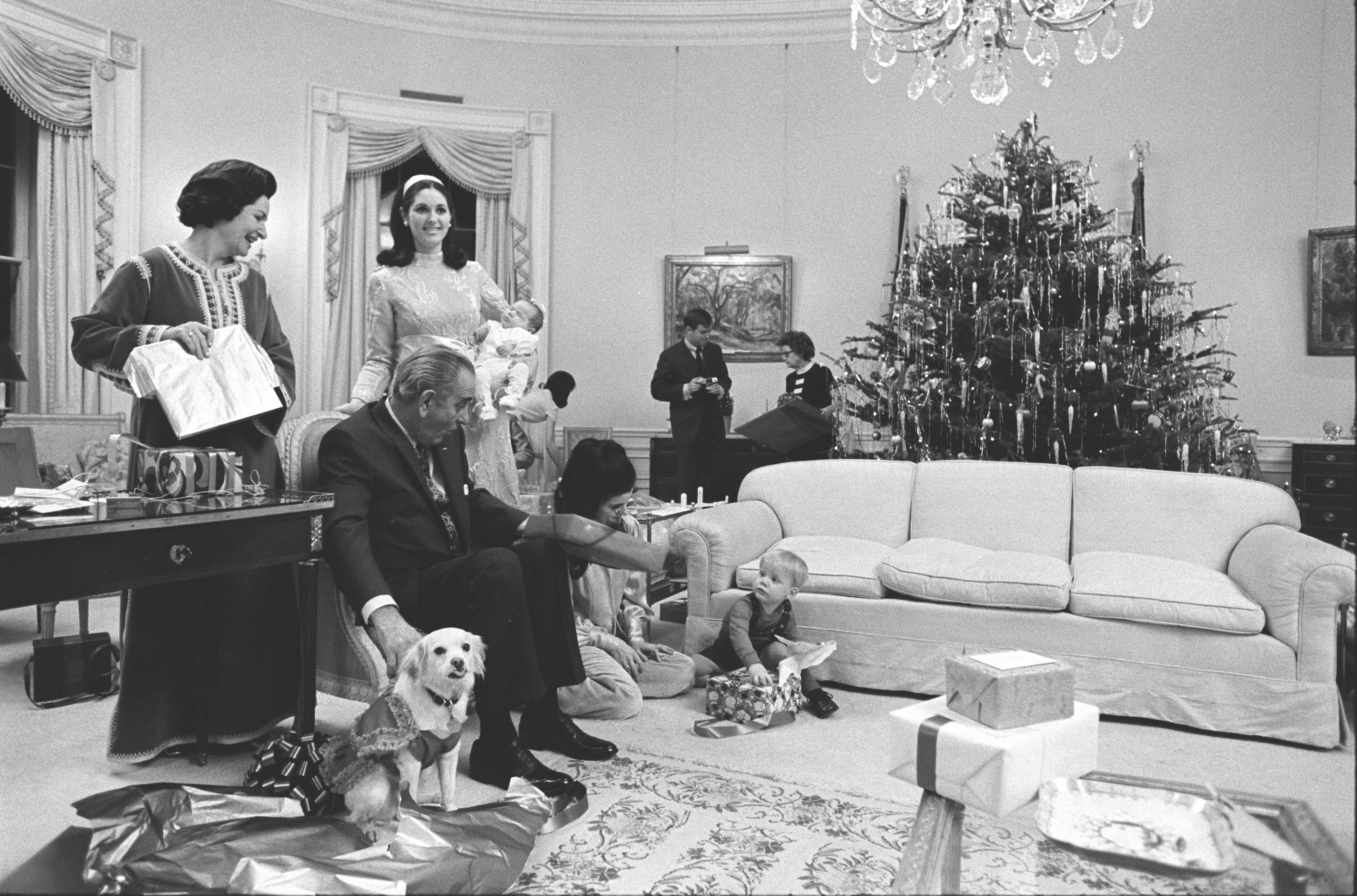
Did this family gathering reminded him of earlier ones when he was a youth growing up?
Oh, you know it had to be, and I’m sure that was exactly why he wanted to do it. He remembered all of those, and he wanted to assume the role and gather the clan. I just wish I had done better by it and had had the house all aglow with flowers and fat, comfortable furniture. There was our rather bedraggled-looking Christmas tree, which the children and I actually decorated together. It didn’t profit too much from our inexpert fingers. Then we took pictures by the front door, which had a wreath on it, too. It was a big picture-taking session, and I cherish every one.
My own family came to spend Thanksgiving with us at the ranch in 1953. Daddy and his wife, Ruth; my brother Tommy; and Sarah, his wife. Tony, the one with whom I felt the closet affinity of all, and Matiana. There were our children, sitting down crossed-legged, on the grounds in front of us, in the front yard of the ranch. I’m a little bit too plump, which doesn’t speak well for me. There’s a warmth in looking back and seeing Tommy’s and Tony’s faces, even if it is the occasion of a great big deer hunt and they have their kill propped up in front of them, and in seeing Daddy with his three children by the fi replace. I’m glad they shared this old house with us some.
Michael L. Gillette directed the LBJ Library’s Oral History Program from 1976 to 1991. He later served as director of the Center for Legislative Archives at the National Archives and is currently the executive director of Humanities Texas in Austin. He is the author of Lady Bird Johnson: An Oral History and Launching the War on Poverty: An Oral History.
Subscribe to the OUPblog via email or RSS.
Subscribe to only American history articles on the OUPblog via email or RSS.
Image credit: From the Lady Bird Johnson: An Oral History, Original in the LBJ Library. Public domain.
The post Christmas at the White House appeared first on OUPblog.
Blog: inspiration from vintage kids books and timeless modern graphic design (Login to Add to MyJacketFlap)
JacketFlap tags: 1950s, 1960s, sweden, Seen Elsewhere, Illustration, Add a tag
Thanks to Johan Anderson for notifying me of the brand new Olle Eksell tribute site! Included on the website are videos, suggested links, a timeline, as well as rare photos of Olle with his wife and peers. In addition, Johan worked with the Eksell family to release a small collection of products which feature Olle’s stunning illustration work.
photo credit: Bruno Ehrs
More images +info are available at the Olle Eksell shop.
Catch Olle on Facebook as well.
——————–
Also worth viewing:
Alvin Lustig
Alexander Girard Book
Karel Martens: Printed Matter
Not signed up for the Grain Edit RSS Feed yet? Give it a try. Its free and yummy.
——————–
©2012 Grain Edit - catch us on Facebook and twitter
Blog: Kid Lit Reviews (Login to Add to MyJacketFlap)
JacketFlap tags: Bob Dylan, children's book, red balloon, 1960s, paper airplane, 5stars, red ball, Children's Books, patience, love, Favorites, Add a tag
How many times must a man look up Before he can see the sky? The answer, my friend, is blowin’ in the wind The answer is blowin’ in the wind. 4.5 stars Bob Dylan’s iconic song, Blowin’ in the Wind, comprises the text for a beautiful children’s book by artist Jon J. Muth. Muth has [...]![]()
Blog: OUPblog (Login to Add to MyJacketFlap)
JacketFlap tags: pop music, Davy Jones, *Featured, TV & Film, Arts & Leisure, Monkees, davy, jones’, jones’s, dolenz, monkees’, obituary, jones, 1960s, Add a tag
By Gordon Thompson
As the Beatles made their historic debut on American television in February 1964, the cast of Oliver!, the actor playing the role of the Artful Dodger, and other acts on the show watched from the wings as the hysteria unfolded. Davy Jones had started his acting career on British television, making his debut appearance in the venerable Coronation Street followed by the gritty Liverpool police drama, Z-Cars. His diminutive stature made him a natural to play teens, but also suggested that he could be a good jockey, and he briefly pursued this career; but when a casting call came for the Broadway version of Lionel Bart’s Oliver!, Jones’ youthful looks seemed ideally suited to play the charismatic child thief and the title character’s mentor. In New York, he received a Tony nomination for his portrayal; however, he had watched the Beatles dominate British media in 1963 and, as they now similarly triumphed in the North America, he saw the next stage in his career.
America’s 1964 hunger for all things British and Jones’ obvious talent brought him to the attention of Screen Gems and American television, which cast him in an episode of the medical drama, Ben Casey. And in 1965, when Screen Gems began searching for talented and attractive actors for a comedy loosely imitating the Beatles’ A Hard Day’s Night, Jones’s profile easily rose to the top of the list. The Monkees debuted in the fall of 1966 on American television and, at 20, his boyish good looks made him an immediate fan favorite. Indeed, he ranked among the most popular male pop figures of the 1960s, his picture regularly appearing in teen magazines. But in an era when the Beatles implored you to turn off your mind, relax, and float downstream, a culture war raged over the Monkees’ authenticity. Nevertheless, Jones supplied strong vocal performances on Monkees’ recordings, especially “Daydream Believer,” the band’s last major hit, and the band with the assistance of a strong studio produced nearly perfect pieces of pop. Moreover, of the four actors who played the Monkees, Jones particularly had both the voice and the charismatic looks for a solo career.
While internal and external tensions eventually led to the end of both the television series and the band, Jones continued to perform, sometimes with fellow Monkee (and child actor) Mickey Dolenz and briefly with songwriters Tommy Boyce and Bobby Hart. In the post-Monkees years, he had a number brief appearances in television and film, and in the eighties, MTV reintroduced the television series and the band to a new generation of viewers.
In the nineties, a reunited Monkees toured and even last year Jones made a number of appearances with Monkees members Dolenz and Peter Tork. From his early experiences as a jockey, Jones maintained an interest in horse racing as an owner and his stable had success on both sides of the Atlantic. Nevertheless, performance remained important to Jones and he had a series of American concert dates scheduled for 2012 with his band.
Jones died this morning at his home in Indiantown, Florida at the age of 66.
Blog: OUPblog (Login to Add to MyJacketFlap)
JacketFlap tags: Music, 1960s, the sixties, emi, the beatles, epstein, pop music, rowe, brian epstein, *Featured, Arts & Leisure, Add a tag
By Gordon Thompson
On a cold winter’s day in early 1962, Brian Epstein and the Beatles huddled together contemplating their failed bid for a Decca recording contract and the bitter aftertaste of rejection that left emptiness in their stomachs. But hunger can feed ambition. Disappointments would ensue, but almost immediately Epstein would be the proverbial right man in the right place at the right time and meet a string of people who were looking for something not-quite-exactly unlike the Beatles.
The first full week of February 1962 would prove to be one of the most remarkable in the Beatles story. On Monday, 5 February, the Beatles’ drummer Pete Best — whom they had still not informed of Decca’s decision — called in sick and his band mates recruited an old friend from a rival band. Ringo Starr appeared that night with Lennon, McCartney, and Harrison in Southport, a city just north of Liverpool where perhaps his dry humor helped ease the pain, just as his personality would help anchor the band two years later as America exploded around them.
Although Decca artist-and-repertoire managers Dick Rowe and Mike Smith had turned them down, Epstein returned to London to argue for reconsideration. Over lunch in London on Tuesday, 6 February, Epstein sat politely arguing with Rowe and Sidney Arthur Beecher-Stevens, Decca’s sales manager, in an attempt to change their corporate mind. Rowe notoriously and with great self-confidence recommended that the manager return to record retailing in Liverpool. They were the experts. They knew these things.
Epstein did win a small “concession” from them: Rowe offered to arrange for ex-Shadow drummer Tony Meehan to produce the Beatles at Decca if the manager agreed to cover the expenses of about £100. Epstein kept his options open and made an appointment for Wednesday, 7 February to meet with Meehan whose squeaky-clean reputation and pop credentials the manager would have found appealing. Still, little about the meeting satisfied the manager. Meehan arrived late (Epstein’s bête noire) and his condescending comments about the Beatles’ audition only added salt to the wound. An interesting moment of musical potential slipped into history; but, the planets were still moving and, on Thursday, the orbs began coming into alignment.
With the addresses of other record companies in London and a copy of the Decca audition tape, Epstein employed this magnetic artifact in his quest to win a contract for his “boys.” Nevertheless, a quickly arranged meeting at Pye Records, the third largest label in Britain, also ended in disappointment. Executives at EMI, the largest music corporation in Britain, had already declined Epstein’s request for an audition even before Decca had accepted. His options narrowed.
Epstein realized that the medium might present the problem: an audition tape clearly made at Decca indicated that the label had rejected the material. What record executive would want to sign performers that another label had already rejected? Epstein knew that EMI’s HMV store near the Bond Street underground station had a service that would transfer taped material to disk. Certainly, a disk would say “important.” Conveniently, Epstein also knew the store manager.What transpires on Thursday, 8 February arguably shifts the course of musical history. Combining a social visit with the need to t
Blog: inspiration from vintage kids books and timeless modern graphic design (Login to Add to MyJacketFlap)
JacketFlap tags: 1950s, modern, 1960s, 1970s, Found design, USA, Books, Uncategorized, Add a tag
Todd Oldham who put together an excellent monograph on Charles Harper and Kiera Coffee recently released an exciting new book chronicling the work of the late Alexander Girard. This 672-page beast published by Ammo covers virtually every aspect of Girard’s distinctive career. As one of the most prolific and versatile mid-20th century designers, Girard’s work spanned many disciplines, including textile design, graphic design, typography, illustration, furniture design, interior design, product design, exhibit design, and architecture. Exhaustively researched and lovingly assembled by Oldham, this tome is a must-have book on Girard’s oeuvre.
Details:
Alexander Girard
By Todd Oldham & Kiera Coffee
16 x 12 inches / 672 pages
You can pick up a copy here.
In addition, Ammo is releasing several other products related to Girard.
Alexander Girard Memory Game
7.5 x 7.5 inches / 36 pairs/72 cards total
Alexander Girard Floor Puzzle
24-piece jigsaw puzzle / completed puzzle size: 24 x 36 inches
Alexander Girard Color Board
6 x 6 inche
Blog: inspiration from vintage kids books and timeless modern graphic design (Login to Add to MyJacketFlap)
JacketFlap tags: Off Our Bookshelves, stamps, 1960s, italy, ephemera, Add a tag
Italian postage stamps designed by E. Consolazione, R. Cuzzani, and A. de Stefani in 1967 to commemorate the 50th anniversary of the Giro d’Italia cycling championship.
Ciclisti in volata - Racing cyclists in the general classification of the Giro. The overall winner of the Giro d’Italia wears the maglia rosa (”pink jersey”)

Ciclisti in salita - Cyclists climbing uphill in the mountains classification of the Giro. The best climber in the mountain stages wears the maglia verde (”green jersey”).
*Huge thanks to Wes for the scans!
Also worth viewing…
1962 Denmark Christmas Seals
Portugal 1981 Census Stamps
Hong Kong Festivals 1975 Stamps
Like what you see?
Sign up for our Grain Edit RSS feed. It’s free and yummy! YUM!
©2009 Grain Edit - catch us on Facebook and twitter
Blog: inspiration from vintage kids books and timeless modern graphic design (Login to Add to MyJacketFlap)
JacketFlap tags: France, 1950s, architecture, 1960s, Found design, Add a tag
I’m an avid fan and collector of architectural ephemera, so I was excited to discover David Liaudet’s inspiring blog Architectures de Cartes Postales. Since 2007 David has used the space to explore modern and contemporary architecture through its representation in postcards. The online archive is filled with amazing examples of sculptural elements, signage, memorial buildings and Brutalist architecture from the 1950s-70s. If you have a couple of hours to spare I highly recommend a visit.
——————–
Also worth viewing:
Cite des Choux
Nakagin Capsule Tower
The Architecture of Gomorrah
Not signed up for the Grain Edit RSS Feed yet? Give it a try. Its free and yummy.
——————–
No Tags©2009 Grain Edit - catch us on Facebook and twitter
Add a CommentBlog: inspiration from vintage kids books and timeless modern graphic design (Login to Add to MyJacketFlap)
JacketFlap tags: vintage, 1960s, 1970s, Charley-Harper, kids-books, J.P. Miller, Off Our Bookshelves, Alain Gree, Illustration, out-of-print, 1950s, Add a tag
On a recent and most adventurous trip to the South of France, I had the pleasure of visiting the small village of Montolieu. Known as the “Village of Books,” Montolieu has a grand array of artisans that specialize in book binding and printing as well as antiquarian bookstores specializing in everything from vintage periodicals and antiquities to comics, art and kids books.
Today’s post will unearth some of my favorite finds from my trip, including books illustrated by J.P. Miller, Charley Harper, and Alain Gree.
I went with a few other folks to Montolieu during the awkward hour of 11:30A, which is right before all shops close up for lunch. I was on a time crunch, and the first (and only) bookstore I visited was La Rose Des Vents, which translates to “The Compass” in English. The shop was fairly small and had two rooms, with regional and history books in the front and children’s books in the back.
While there, I was able to find a few neat books, including a drawing book titled Voyage a Travers Le Monde (Journey Through the World), c. 1974. The book provides instructions on how to draw various cultures from around the world, not by any means accurately by the way.
In addition to that book, I was able to find Le Manege Vivant (c. 1950), which is the French edition of The Marvelous Merry-Go-Round, written by Jane Werner and illustrated by J.P. Miller. I had not seen the book before, and the hippo alone on the cover was enough reason to hold onto it! Upon opening the book, I was pleased to see so many whimsical and colorful illustrations, trademark of Miller’s style.
Add a CommentBlog: OUPblog (Login to Add to MyJacketFlap)
JacketFlap tags: History, US, Religion, Vietnam War, Western Religion, protest, christian, baltimore, Martin Luther King, christianity, terrorism, 1960s, this day in history, draft, catholic, catholicism, knights of columbus, *Featured, Catonsville, catonsville nine, Mark Massa, napalm, selective service, berrigan, massa, Add a tag
The United States was plagued by social unrest throughout the 1960’s. 1968 stands out as the most militant and contentious year of the decade with the assassinations of Martin Luther King Jr. and Robert Kennedy. In that same year, the Selective Service office announced that its December quota for the draft would be the highest thus far, leading countless Americans to engage in acts of civil disobedience. American Catholics, who were led to accept mainstream cultural values and unhesitatingly support foreign policy faced a changing identity brought on by a remarkable act known as the Catonsville Nine. Led by two priests, the Catonsville Nine would set off a wave of other Catholic protests against the Vietnam War. The following excerpt from Mark Massa’s The American Catholic Revolution describes this transformative moment in American Catholic history.
At 12:30 on the afternoon of May 17, 1968, an unlikely crew of seven men and two women arrived at the Knights of Columbus Hall in Catonsville, Maryland, a tidy suburb of Baltimore. Their appearance at 1010 Frederick Road, however, was only tangentially related to the Knights. The target of their pilgrimage was Selective Service Board 33, housed on the second floor of the K. of C. Hall. The nondescript parcel they carried with them contained ten pounds of homemade napalm, whipped up several evenings before by Dean Pappas, a local physics teacher who had discovered the recipe in a booklet published by the U.S. Special Forces (two parts gasoline, one part Ivory Flakes). On entering the office, one of them explained calmly to the three surprised women typing and filing what was going to happen next. But either out of shock or because they hadn’t heard the announcement clearly the women continued about their business until the strangers began snatching up 1-A files, records of young men whose draft lottery numbers made them most likely to be drafted to fight in Vietnam. At that point one of the women working in the office began to scream.
The raiders began stuffing the 1-A files (and as many 2-As and 1-Ys as they could grab) into wire trash baskets they had brought for the purpose. When one of the office workers tried dialing the police, Mary Moylan, one of the nine intruders, put her finger on the receiver button, calmly advising the distraught worker to wait until the visitors were finished. The burning of the draft records was intended to be entirely nonviolent, although one of the office workers had to be physically restrained from stopping the protesters, in the course of which she suffered some scratches on her leg. With that one exception, the raid went according to plan. Indeed, as Daniel Berrigan, S.J. one of the leaders of the event, later remembered it.
We took the A-1 [sic] files, which of course were the most endangered of those being shipped off. And we got about 150 of those in our arms and went down the staircase to the parking lot. And they burned very smartly, having been doused in this horrible material. And it was all over in 10 or 15 minutes.
Once Berrigan and the others left the office, Moylan said to the office worker with the phone, “Now you can call whoever you wish.” But instead of calling the police she hurled it through the window, hoping to get attention of workmen outside the building, which she did: one of the workmen quickly rushed up to the office to see what the ruckus was. But his arrival on the scene came too late to interrupt the protest. A small group of reporters and photographers, as well as a TV crew, had already gathered, having been tipped off by a memb
Blog: the fabled needle | an art, craft and sewing blog! (Login to Add to MyJacketFlap)
JacketFlap tags: Sewing, red, 1960s, white, skirt, Add a tag

I mentioned the other day on Facebook that I was going to start going through my sewing to-do pile. I can’t help but collect pretty vintage things that need repair or alterations, or start and stop sewing projects. But then I end up with many garments (things that languish at the bottom of my fabric stash for months, years even) that could be rather fetching when done–eep, if they ever do! It’s a bad habit I’m trying to break; alas, it’s difficult since I get so excited by new ideas and outfits.
Please excuse the crappiness of these photos. Taking pictures of one’s self can be quite the challenge and it’s something I haven’t taken the time to master. I’m for sure making the goofiest faces in these so I must continue to bombard you with headless images. (Oh, but don’t you love this bag? It was a bargain and a birthday gift to myself last year!)
First up: this $5 1960s blouse.

I don’t like long sleeved blouses and there was a stain near one cuff anyway so I just chopped the sleeves off to create short ones. The hems stuck out in a funny way so I threaded some 1/4″ elastic through them. I thought about changing the buttons and maybe even widening the neckline but that’s a lot of work and I think it looks OK as is, especially if I leave the top button undone. (I don’t like tight necklines; I feel too closed up!) The rows of lace and eyelet are the best parts.
Now the skirt: I started to make this before Christmas, from vintage Simplicity pattern #7869 (View 5, specifically):
It’s of fine wale red corduroy. I didn’t finish it in time for the holidays because, ha, I gained some weight and could not zip it up! (Yes, before the sugar cookies and turkey and such.) Shame-faced, I tucked it away only to find it again while reorganizing my fabric stash. (Which is something I have to do periodically as it can get quite messy and chaotic in there.) Thankfully I’ve lost that extra cushion around my middle and was delighted to find that the skirt fit; all I had to do was hem it. The hips seem a bit big now and I wish I had clipped and notched the seams of the waistband a lot more (especially in the front) since the thickness of the fabric is creating a ridge that is a little too obvious for my liking. Oh well, not all my projects need to turn out perfectly and at least it’s wearable! (I was, however, able to install the zipper in one take which is pretty darn fantastic as that’s one of my least favorite things to do and it’s always a headache for me.)
I do like how the vintage ivory and gold buttons look against the red:
 0 Comments on To-Dos Checked Off My List {’60s Red & White} as of 1/1/1900
0 Comments on To-Dos Checked Off My List {’60s Red & White} as of 1/1/1900
Blog: inspiration from vintage kids books and timeless modern graphic design (Login to Add to MyJacketFlap)
JacketFlap tags: Books, exhibitions, netherlands, 1960s, 1970s, Found design, Add a tag
If you’re unable to visit the Wim Crouwel retrospective at London’s Design Museum, you can still pick up the exhibition catalog. Designed and published by Unit Editions the catalog contains Crouwel’s posters, documents, manuals - even his stamps and personal photographs - presented in the raw, bare-concrete setting of the Crouwel archive. Also included is an interview with Wim conducted by Tony Brook, the exhibition’s curator and the book’s co-editor.
Available now at Unit Editions.
Details
152 x 230mm
144 pages
Paperback (3 different covers)
ISBN 978-0-9562071-3-5
Editors: Tony Brook & Adrian Shaughnessy
(Via Aisle One)
——————–
Also worth viewing:
Total Design and its pioneering role in graphic design
Wim Crouwel Archive
6th Biennale of Graphic Design
Not signed up for the Grain Edit RSS Feed yet? Give it a try. Its free and yummy.
——————–
©2009 Grain Edit - catch us on Facebook and twitter
Blog: OUPblog (Login to Add to MyJacketFlap)
JacketFlap tags: Music, History, US, UK, Media, smoking, thompson, 1960s, Leisure, typewriters, alternative, gordon, gordon thompson, please please me, counterculture, sixties, Strand book store, Bieber, The Oxford Comment, oxford comment, *Featured, john mcmillian, smoking typewriters, underground press, Audio & Podcasts, Jesse Kornbluth, headbutler, kornbluth, mcmillian, Add a tag
Tweet
Are we living in the “anti-60s”? The Oxford Comment compares the counterculture movement to the blogosphere and pop music today….Bieber vs. Beatles! Hipsters vs. Hippies! Let the showdown begin…
Want more of The Oxford Comment? Subscribe and review this podcast on iTunes!
You can also look back at past episodes on the archive page.
Featured in this Episode:
Lauren Skypes with Gordon Thompson, Professor of Music at Skidmore College and author of Please Please Me: Sixties British Pop, Inside Out. You can read Thompson’s OUPblog column here.
* * * * *
Michelle visits the Strand Book Store in New York City and speaks with John McMillian*, author of Smoking Typewriters: The Sixties Underground Press and the Rise of Alternative Media in America,
and Jesse Kornbluth, founder of HeadButler.com.
* * * * *

Blog: inspiration from vintage kids books and timeless modern graphic design (Login to Add to MyJacketFlap)
JacketFlap tags: vintage, 1960s, 1970s, Found design, graphic-design, record labels, Add a tag
Center of Attention is an online collection of vintage record center labels by designer Simon Foster. Simon’s collection contains some real colorful gems of labels, which seem to be mostly from the 60’s and 70’s, although he has a few more antique examples. Although the aging crisp graphics, imperfect printing, and retro typefaces are super intriguing, my favorite thing about these old labels are the classic song titles; with such great hits as “I’m Gonna Miss You (Like the Devil),” “T-R-A-M-P,” “The Machine Demands a Sacrifice,” and “Fattie Bum Bum.”
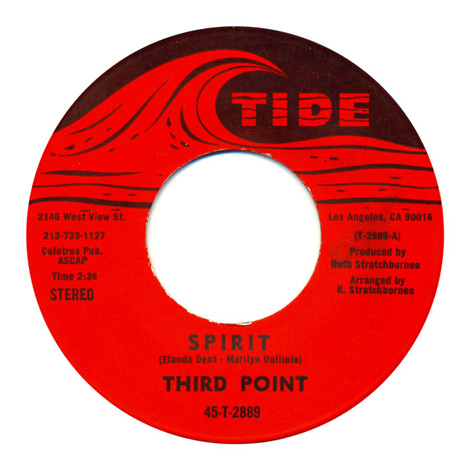
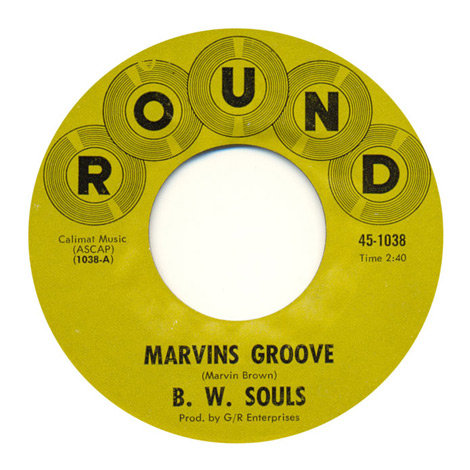
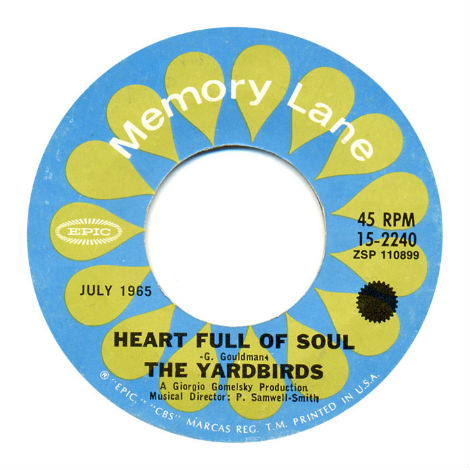
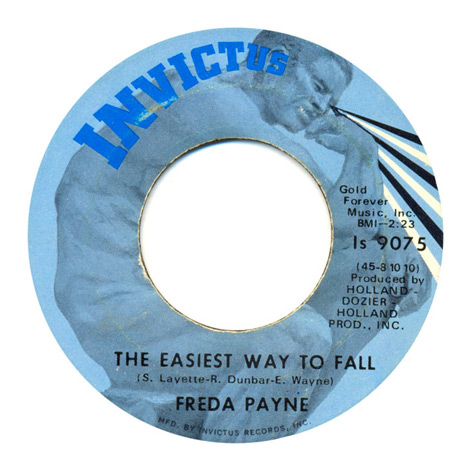

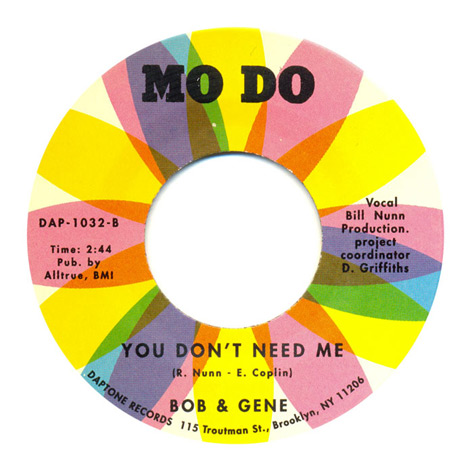
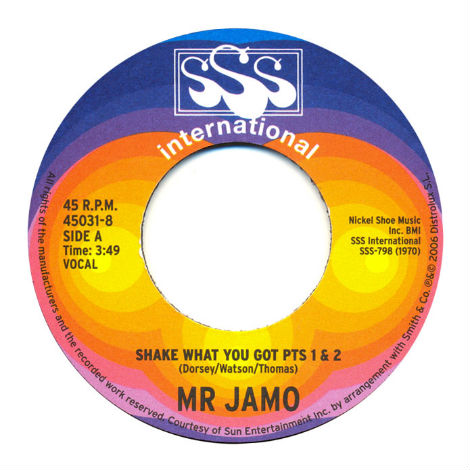
Simon also just added to the site a collection of record sleeves, in case you’ve already had too many donuts this morning.
——————–
Also worth viewing:
Project Thirty Three: Vintage Album Covers
Not signed up for the Grain Edit RSS Feed yet? Give it a try. Its free and yummy.
——————–
Blog: inspiration from vintage kids books and timeless modern graphic design (Login to Add to MyJacketFlap)
JacketFlap tags: Uncategorized, japan, vintage, posters, 1960s, 1970s, Found design, Add a tag
Pink Tentacle digs up an impressive collection of posters by Japanese artist and designer Kazumasa Nagai. Enjoy!
(Thanks to
——————–
Also worth viewing:
Ayao Yamana: Graphic Design
Japanese Graphic Design in the 1950s
Japanese Book Covers
Related Books:
Kazumasa Nagai: Design life
The Works of Kazumasa Nagai
Not signed up for the Grain Edit RSS Feed yet? Give it a try. Its free and yummy.
——————–
No TagsView Next 25 Posts








